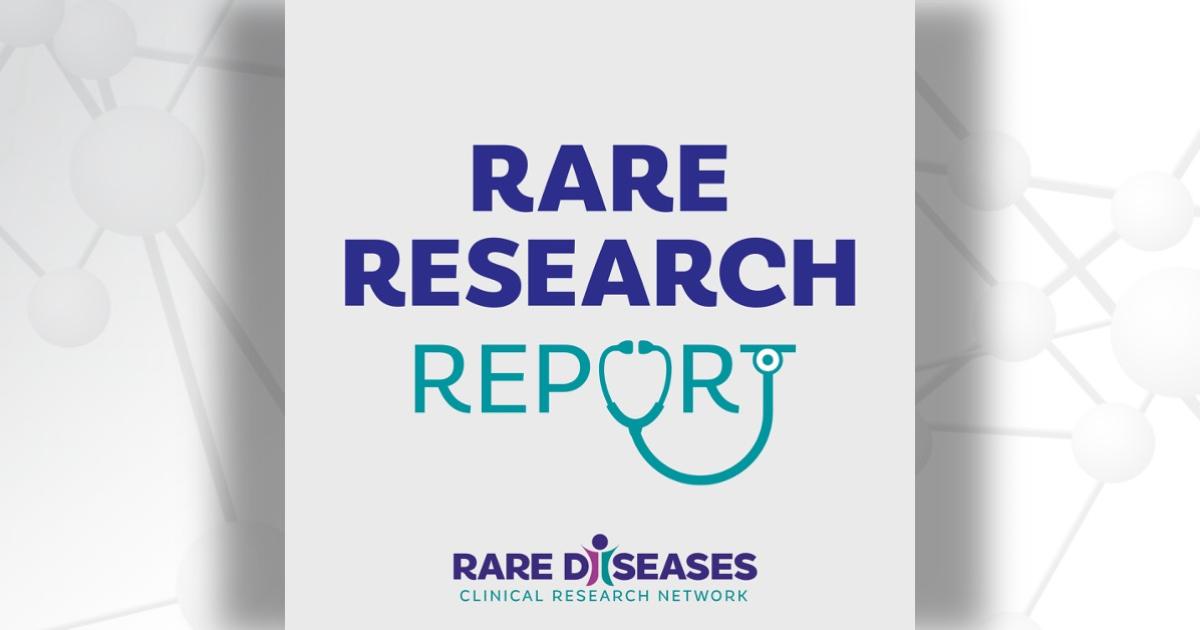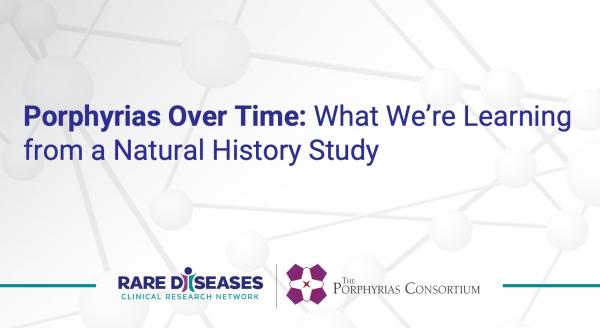Each month, we share summaries of recent Rare Diseases Clinical Research Network (RDCRN) grant-funded publications. Catch up on the latest RDCRN research below.
Jump to:
- Brittle Bone Disorders Consortium (BBDC)
- Frontiers in Congenital Disorders of Glycosylation Consortium (FCDGC)
- Global Leukodystrophy Initiative Clinical Trials Network (GLIA-CTN)
- Lysosomal Disease Network (LDN)
- Nephrotic Syndrome Study Network (NEPTUNE)
- Primary Immune Deficiency Treatment Consortium (PIDTC)
Listen to these summaries on the Rare Research Report podcast.
Brittle Bone Disorders Consortium (BBDC)
Discussing Genetic Testing for Monogenic Disorders of Osteoporosis
Monogenic disorders of osteoporosis are characterized by low bone mass, increased bone fragility, and increased risk of fractures. There are currently over 50 different known types of these disorders, which are each caused by variations in a single gene. Widespread availability of clinical genetic testing offers an opportunity to correctly diagnose individuals with these disorders.
In this review paper, researchers discuss genetic testing for patients with suspected monogenic forms of osteoporosis. The team outlines the principles of clinical genetic testing and provides practical guidance for clinicians to navigate the process.
Authors note that clinicians should be aware of how to incorporate genetic testing into their practices, as these techniques could help identify the appropriate diagnosis for patients with low bone mass, multiple or unusual fractures, and severe or early-onset osteoporosis.
Busse E, Lee B, Nagamani SCS. Genetic Evaluation for Monogenic Disorders of Low Bone Mass and Increased Bone Fragility: What Clinicians Need to Know. Curr Osteoporos Rep. 2024 Apr 11. doi: 10.1007/s11914-024-00870-6. Epub ahead of print. PMID: 38600318.
Frontiers in Congenital Disorders of Glycosylation Consortium (FCDGC)
Investigating the Effects of Glycan Extension Deficiency in ALG3-CDG
ALG3-CDG is a rare congenital disorder of glycosylation (CDG) characterized by neurological symptoms, transaminitis (elevated liver enzymes), and frequent infections. When the endoplasmic reticulum—a network of membranes inside a cell that plays a major role in protein synthesis and transport—is under stress, one of the earliest and fastest responses in cells is glycan extension. The first step of this process is catalyzed by the ALG3 enzyme, which is deficient in patients with ALG3-CDG.
In this study, researchers investigated the effects of glycan extension deficiency in ALG3-CDG. The team explored the biochemical consequences of this deficiency and associated response to endoplasmic reticulum stress.
These results provide a better understanding of how glycan extension deficiency affects patients with ALG3-CDG. Authors note that these findings also have important implications for the development of personalized medicine for other types of CDG.
Daniel EJP, Edmondson AC, Argon Y, Alsharhan H, Lam C, Freeze HH, He M. Deficient glycan extension and endoplasmic reticulum stresses in ALG3-CDG. J Inherit Metab Dis. 2024 Apr 10. doi: 10.1002/jimd.12739. Epub ahead of print. PMID: 38597022.
Global Leukodystrophy Initiative Clinical Trials Network (GLIA-CTN)
Exploring Potential Biomarkers for Alexander Disease
Alexander disease is a rare disorder of the nervous system characterized by leukodystrophy, or the destruction of myelin (the fatty coating surrounding nerve fibers). Biomarkers are needed to help researchers monitor the progression of the disease and response to treatments. Elevated levels of the GFAP protein in the blood of patients with Alexander disease could serve as a possible biomarker. However, therapies currently in development involve targeting GFAP for treatment, highlighting a critical need for additional biomarkers.
In this study, researchers explored the potential of biomarkers used in other neurodegenerative diseases for Alexander disease. The team measured concentrations of GFAP, neurofilament light, and tau in blood samples from individuals with Alexander disease and healthy controls.
Results show significant changes in these levels in individuals with Alexander disease, especially those with infantile onset.
Ashton NJ, Di Molfetta G, Tan K, Blennow K, Zetterberg H, Messing A. Plasma concentrations of glial fibrillary acidic protein, neurofilament light, and tau in Alexander disease. Neurol Sci. 2024 Apr 1. doi: 10.1007/s10072-024-07495-8. Epub ahead of print. PMID: 38558318.
Lysosomal Disease Network (LDN)
Pompe disease is an inherited lysosomal disorder caused by an abnormal enzyme that cannot break down glycogen. Patients with infantile-onset Pompe disease often experience high-sustained anti-rhGAA IgG antibody titers (HSAT), which can lower the efficacy of enzyme replacement therapy and lead to health complications.
In this study, researchers explored management approaches for HSAT in patients with Pompe disease. The team compared the disease course of eight patients with infantile-onset Pompe who were treated with the drug bortezomib. Researchers tracked differences in timing, dosage, and outcomes among these patients.
Results suggest that bortezomib should be initiated at the earliest sign of HSAT with a minimum of two consecutive treatment cycles to achieve optimal outcomes. Authors recommend close monitoring of HSAT and early intervention as soon as significantly elevated levels are noted.
Desai AK, Shrivastava G, Grant CL, Wang RY, Burt TD, Kishnani PS. An updated management approach of Pompe disease patients with high-sustained anti-rhGAA IgG antibody titers: experience with bortezomib-based immunomodulation. Front Immunol. 2024 Mar 8;15:1360369. doi: 10.3389/fimmu.2024.1360369. PMID: 38524130; PMCID: PMC10959098.
Nephrotic Syndrome Study Network (NEPTUNE)
Primary proteinuric glomerulopathies are a group of kidney disorders characterized by dysfunction of the glomeruli (kidney structures responsible for filtering the blood and removing waste in urine), leading to elevated protein in the urine. Elevated levels of fibroblast growth factor 23 (FGF23), a hormone that helps regulate kidney function, are a risk factor for cardiovascular disease. However, not much is known about how FGF23 impacts cardiovascular health in proteinuric glomerulopathies.
In this study, researchers investigated the association of FGF23 levels with resting blood pressure and lipids over time in patients with proteinuric glomerulopathies. The team analyzed data from 204 adults and 93 children using generalized estimating equation regression techniques.
Results showed that higher baseline FGF23 levels were significantly associated with hypertensive blood pressure over time. Authors note that FGF23 should be investigated further as a potential therapeutic target for reducing cardiovascular disease in proteinuric glomerulopathies.
Pfaff M, Denburg MR, Meyers KE, Brady TM, Leonard MB, Hoofnagle AN, Sethna CB. Association of Fibroblast Growth Factor 23 with Blood Pressure in Primary Proteinuric Glomerulopathies. Am J Nephrol. 2024;55(2):187-195. doi: 10.1159/000535092. Epub 2023 Dec 21. PMID: 38128487; PMCID: PMC10987260.
Primary Immune Deficiency Treatment Consortium (PIDTC)
Severe combined immunodeficiency (SCID) is a genetic disorder characterized by very low T cell numbers, leading to frequent infections and abnormal (low) function of the immune system. Phytohemagglutinin (PHA), a lectin found in red kidney beans, stimulates T cell growth. Several methods can be used to measure PHA-stimulated T cell growth. However, interpretation of results can vary based on the method used.
In this study, researchers explore how different methods of measuring PHA-stimulated T cell growth affects test results and interpretation in patients with SCID. The team analyzed data collected from 307 participants with SCID for PHA-based T cell growth, using either a radioactive or flow cytometry method.
Results showed a more accurate analysis from the flow cytometry method—especially in patients with severely low T cell numbers—suggesting that the method used to measure PHA growth impacts the interpretation of results. Authors note that this test is not essential for the diagnosis of typical SCID and should only be considered as a supportive test.
Abraham RS, Basu A, Heimall JR, Dunn E, Yip A, Kapadia M, Kapoor N, Satter LF, Buckley R, O'Reilly R, Cuvelier GDE, Chandra S, Bednarski J, Chaudhury S, Moore TB, Haines H, Dávila Saldaña BJ, Chellapandian D, Rayes A, Chen K, Caywood E, Chandrakasan S, Lugt MTV, Ebens C, Teira P, Shereck E, Miller H, Aquino V, Eissa H, Yu LC, Gillio A, Madden L, Knutsen A, Shah AJ, DeSantes K, Barnum J, Broglie L, Joshi AY, Kleiner G, Dara J, Prockop S, Martinez C, Mousallem T, Oved J, Burroughs L, Marsh R, Torgerson TR, Leiding JW, Pai SY, Kohn DB, Pulsipher MA, Griffith LM, Notarangelo LD, Cowan MJ, Puck J, Dvorak CC, Haddad E. Relevance of lymphocyte proliferation to PHA in severe combined immunodeficiency (SCID) and T cell lymphopenia. Clin Immunol. 2024 Apr;261:109942. doi: 10.1016/j.clim.2024.109942. Epub 2024 Feb 15. PMID: 38367737; PMCID: PMC11018339.
The Rare Diseases Clinical Research Network (RDCRN) is funded by the National Institutes of Health (NIH) and led by the National Center for Advancing Translational Sciences (NCATS) through its Division of Rare Diseases Research Innovation (DRDRI). Now in its fourth five-year funding cycle, RDCRN is a partnership with funding and programmatic support provided by Institutes, Centers, and Offices across NIH, including the National Institute of Neurological Disorders and Stroke, the National Institute of Allergy and Infectious Diseases, the National Institute of Diabetes and Digestive and Kidney Diseases, the Eunice Kennedy Shriver National Institute of Child Health and Human Development, the National Institute of Arthritis and Musculoskeletal and Skin Diseases, the National Heart, Lung, and Blood Institute, the National Institute of Dental and Craniofacial Research, the National Institute of Mental Health, and the Office of Dietary Supplements.






